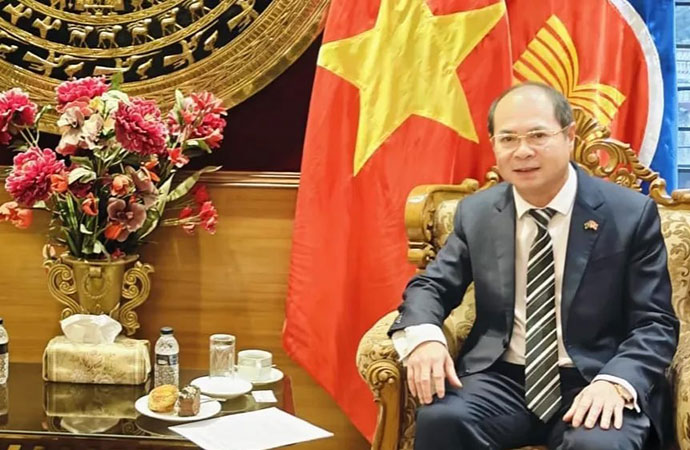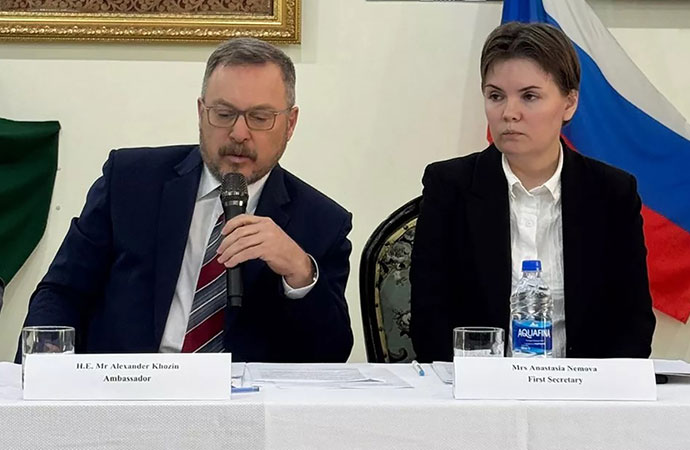Featured 2

The achievement of full human potential and of sustainable development is not possible if one half of humanity (i.e. women and girls) continues to be denied its full human rights and opportunities. Women and girls, therefore, must enjoy equal access to quality education, economic resources and political participation as well as equal opportunities with men and boys for employment, leadership and decision-making at all levels. The 2030 Agenda for Sustainable Development has opened a new chapter in the long struggle towards achieving gender equality. Its commitment to 'leave no one behind' expresses the conviction that boys and girls, men and women should benefit equally from development. It envisages a 'world in which every woman and girl enjoys full gender equality and all legal, social and economic barriers to their empowerment have been removed'.
The UNESCO publication "Global Education Monitoring Report Gender Review 2018" focuses on a broad conception of gender equality that extends beyond counting boys and girls in classrooms. Gender inequality takes many different guises. Inequality can lie in the under-representation of women in education leadership positions, the inappropriate school infrastructure or the misrepresentation of gender in textbooks. The Gender Review looks at who should be called to account when gender inequality in education exists. It also reminds us that countries have made legal commitments for girls' and women's right to education through international treaties. Fulfilling these obligations means that governments should put in place laws and policies, which tackle the obstacles that women and girls face in accessing school and to prevent discrimination while they are in school.
The Gender Review report is divided into two main parts. The first part examines disparities in participation and skills, in education and political leadership positions, and in selected aspects of infrastructure and curricula. The world has achieved the target of gender parity at all levels except tertiary education. But this is not true of all regions, country income groups or individual countries. Only 66% of countries have achieved gender parity in primary education, 45% in lower secondary and 25% in upper secondary. The world is still a long way from ensuring that all children, adolescents and youth, of either gender, are enrolled in school. In 2015, there were 264 million primary and secondary age children and youth out of school. However, gender disparities in out-of-school rates have narrowed substantially over the last 15 years. Globally, a gap exists only in primary education: 9.7% of primary school-age girls and 8.1% of boys are out of school. In lower and upper secondary education, there is parity overall, but disparities emerge at regional level. For example, in Northern Africa and Western Asia, 12% of adolescent boys and 18% of adolescent girls are out of school.
In tertiary education, only 4% of countries have achieved parity, with the gender imbalance increasingly at the expense of males. Overall, there are more females than males in tertiary education in almost all regions. As Southern Asia moves towards closing the gap, sub-Saharan Africa is the only region where women still do not enroll in or graduate from tertiary education at the same rates as men. However, in many countries, although women outnumber men as graduates, they lag behind men in completing science, technology, engineering and mathematics (STEM) degrees. In Chile, Ghana and Switzerland, women account for less than one-quarter of all STEM degrees. By contrast, women in Albania, Algeria and Tunisia are more likely than men to earn a STEM degree.
The feminization of the teaching workforce in most countries is a well-known phenomenon, but less attention is paid to the continued imbalance in men's favor in education related leadership positions. The data show that gender inequality in school leadership persists in many countries. For example, on average across OECD countries, 68% of lower secondary teachers are women, but women account for only 45% of principals. Even fewer women occupy leadership positions in higher education. As of 2009, only 13% of higher education institutions in 27 EU countries were headed by women. A survey of Commonwealth countries showed that, in 2006, women were the executive heads of 9% of 107 higher education institutions in India and just 1% of 81 higher education institutions in sub-Saharan African countries.
The second part of the review analyses institutions, laws and policies to explore ways to determine and enforce accountability for gender equality in education. It consists of four sections. The first section reviews how country responsibilities for gender equality in education are defined at the global level and how they are enforced. The second section focuses on governments' legal obligations to create an education plan that is non-discriminatory. The last two sections examine the responsibilities of key education actors for ensuring gender equality in access to school and providing gender equality through school. Although almost all countries have committed through international treaties and national legislation to ensuring gender equality, this review shows that the equality principle is frequently violated around the world.
The achievement of the 2030 Agenda for Sustainable Development largely depends on the world's success in creating a level playing field for boys and girls, women and men, in education as in other sectors. Although achieving gender equality in education involves complex processes and the efforts of many actors, accountability for respecting the right to gender equality in education mainly starts with governments. To ensure they are held to account for their commitments, states must respect, protect and fulfill the right to education, which also requires ensuring that third parties do not prevent equal access to and enjoyment of education, and adopting legislative, administrative, budgetary, judicial and other measures towards full realization of the right. Civil society groups should take an active stance against gender discrimination.
The writer is an independent researcher. E-mail: smrayhanulislam@hotmail.com

























Leave a Comment
Recent Posts
A total of 2,582 candidates su ...
A total of 2,582 candidates submitted nomination papers to contest the ...
A fitting farewell for a giant
The nation has said goodbye to Begum Khaleda Zia, one of the undoubted ...
A Kenyan barber who wields a sharpened shovel thrive ..
A rough year for journalists in 2025, with a little ..
The West Is Not Ready for a Multipolar World
Silicon Valley Socialism